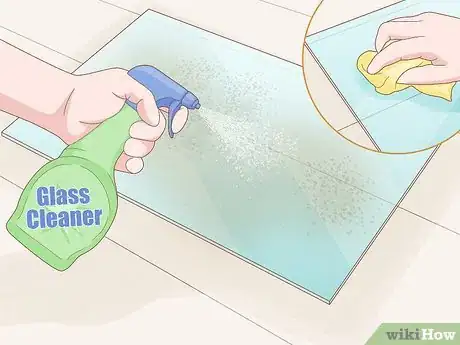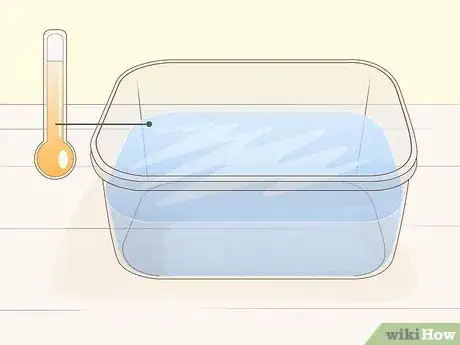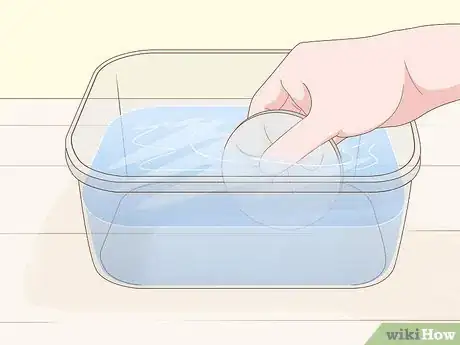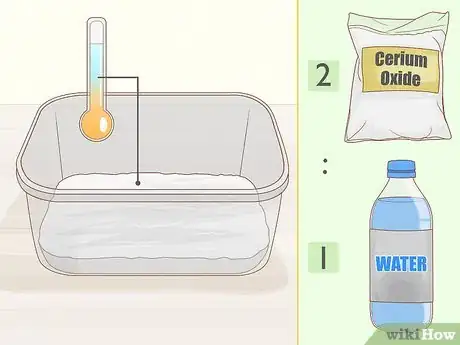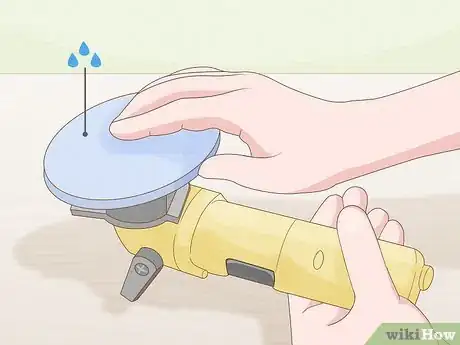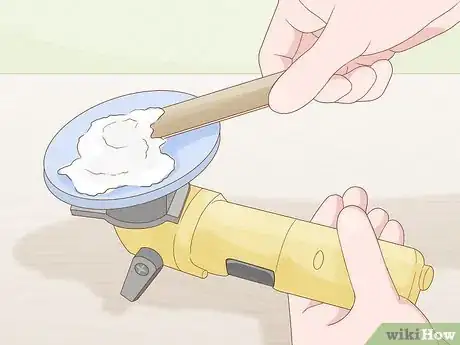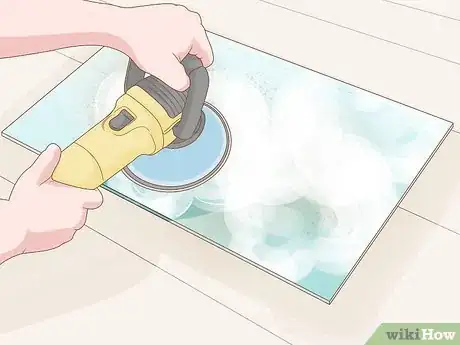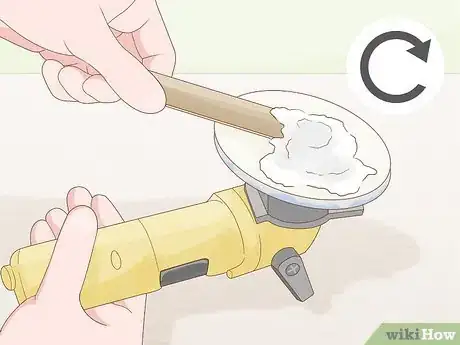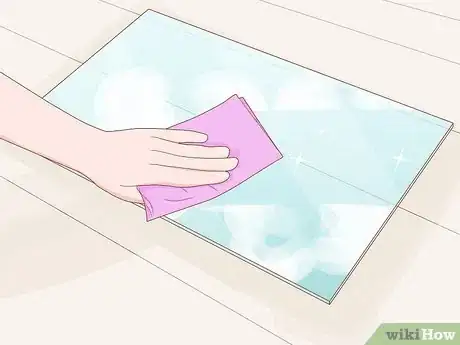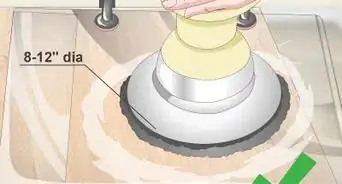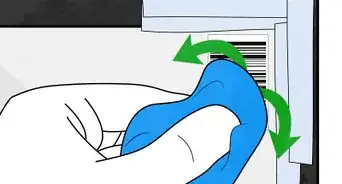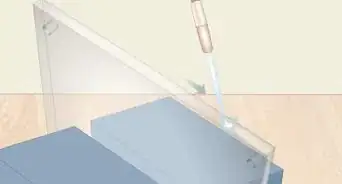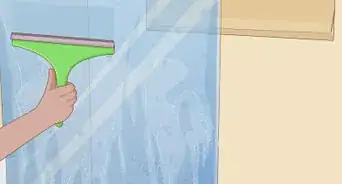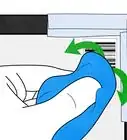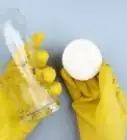This article was co-authored by wikiHow staff writer, Janice Tieperman. Janice is a professional and creative writer who has worked at wikiHow since 2019. With both a B.A. and M.A. in English from East Stroudsburg University, she has a passion for writing a wide variety of content for anyone and everyone. In her free time, you can find her working on a new crochet pattern, listening to true crime podcasts, or tackling a new creative writing project.
This article has been viewed 12,625 times.
Learn more...
Cerium oxide is a popular solution for polishing glass. Unlike other polishing products, like diamond paste, cerium oxide is packaged as a powder. With a little bit of water, you can turn your cerium oxide into a slurry that can effectively smooth and polish your glass.
Steps
Prepping the Glass and Making Slurry
-
1Clean off the glass surface with cleaner before you start polishing. Wipe down the glass with your preferred glass cleaner and a soft, clean cloth. Get rid of any dust, dirt, or grime that’s sticking to the glass, as these can create more scratches during the polishing process.[1]
- As a precaution, double-check that the glass surface is completely clean before you start polishing it.
-
2Fill a small basin halfway with warm water so you can soak your pad. Set a small, 1 US pt (0.47 L) or 1 US qt (0.95 L) container on your work surface. Pour warm water into the basin until it’s filled halfway.[2]
- The size of the container really depends on the size of your polishing pad and the size of the project that you’re polishing. If you’re working with a small section of glass, you can use a 1 US pt (0.47 L) container.
Advertisement -
3Dip your polishing wheel in the warm water. Grab a new polishing wheel, or remove it from your electric drill if it’s still attached. Soak the surface in the warm water, which will make it easier to apply the cerium oxide slurry to the glass.[3]
- The pad only needs to be damp, but not dripping wet.
-
4Mix 2 parts of cerium oxide with 1 part of lukewarm water in a second plastic bin. Pour several spoonfuls of cerium oxide powder into another empty plastic bin. Stir a smaller amount of lukewarm water into the bin to mix the powder until it has a watery, slightly creamy texture.[4]
- You may want to make a large batch of slurry if you’re polishing something big, like a glass tabletop.
- The slurry should have a paint-like consistency, which helps it adhere to the pad and glass.
Polishing with the Slurry
-
1Connect the damp polishing pad to your drill. Check that the pad is securely attached to the electric drill so it doesn’t fall off when you start polishing your glass. For extra guidance, read the instructions with your polishing pad or drill.[5]
-
2Coat the surface of your pad with the cerium oxide mixture. Hold the drill and dip the pad into the cerium oxide slurry. Don’t cake the pad with the mixture, but check that the surface is completely covered.[6]
- You can always dip your pad into more cerium oxide later.
-
3Polish your glass with the pad once you’ve made the slurry. Use the cerium oxide sooner rather than later, so the mixture doesn’t dry out. Keep the container of cerium oxide slurry near your polishing project for easy access.[7]
-
4Add more paste to the pad if it dries out. Dip your pad into the paste again if the slurry doesn’t seem to be sticking the glass and polishing properly.[8] If the slurry starts drying on your glass, spritz over it with lukewarm water.[9]
- The slurry can cause long-term damage to your glass if it dries completely.
-
5Wipe off the slurry after you’ve polished the surface. Take a clean cloth and get rid of any leftover slurry on the glass. You’ll probably use multiple coats of cerium oxide slurry to polish your glass project, so you’ll need to wipe off the leftover mixture after each round of polishing.[10]
Warnings
- You may want to make a larger batch of cerium oxide, as it can several coats to polish your glass.[12]⧼thumbs_response⧽
- If you spill any cerium oxide slurry or powder on your skin, wipe it off with soap and water.[13]⧼thumbs_response⧽
- Wear a safety mask when handling cerium oxide as an extra safety measure.[14]⧼thumbs_response⧽
Things You’ll Need
- Cerium oxide
- 2 small plastic bins
- Water
- Gloves
- Spoon
- Polishing pad
- Electric drill
References
- ↑ https://www.technologylk.com/ceriumoxide/howto.pdf
- ↑ https://www.technologylk.com/ceriumoxide/howto.pdf
- ↑ https://www.eternaltools.com/blog/how-to-remove-scratches-from-glass
- ↑ https://www.eternaltools.com/blog/how-to-remove-scratches-from-glass
- ↑ https://www.technologylk.com/ceriumoxide/howto.pdf
- ↑ https://www.technologylk.com/ceriumoxide/howto.pdf
- ↑ https://www.technologylk.com/ceriumoxide/howto.pdf
- ↑ https://www.eternaltools.com/blog/how-to-remove-scratches-from-glass
- ↑ https://www.technologylk.com/ceriumoxide/howto.pdf
